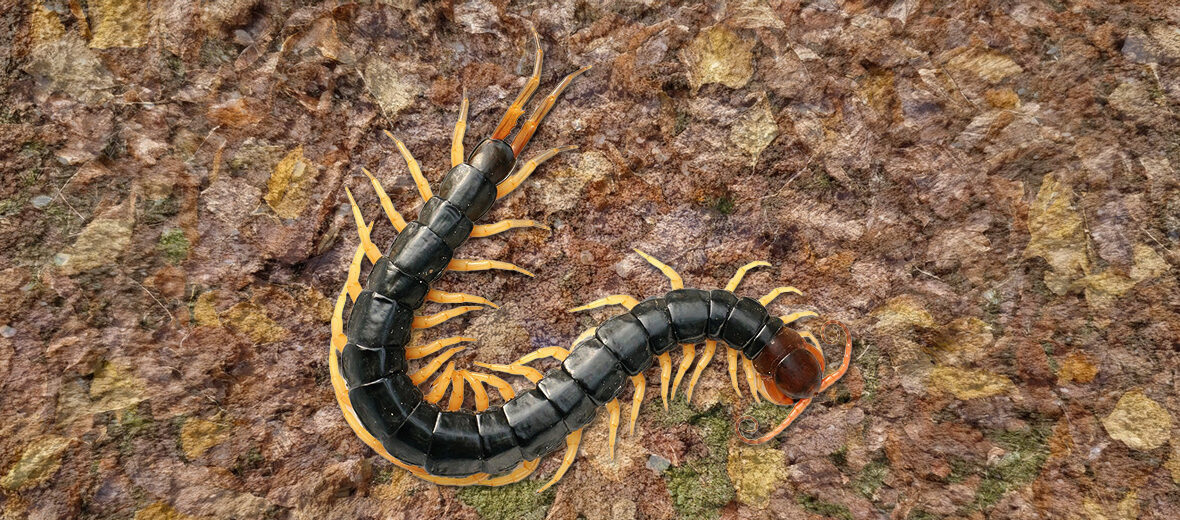
The Chinese red-headed centipede, aka Chinese red head or Tobism centipede, hails from east and southeast Asia. They prefer to dwell in damp, moist, and sheltered environments like under rocks, leaf litter, and rotting logs, primarily in tropical and subtropical regions. These centipedes are not currently listed with the IUCN as they are quite abundant and widespread. They likely face the threats of habitat loss and destruction though.
First the Stats…
Scientific name: Scolopendra mutilans
Weight: Up to .11 ounce
Length: Up to 8 inches
Lifespan: Up to 6 years
Now on to the Facts!
1.) In a very rare trait among centipedes, these critters tend to get along with other centipede species, rather than hunting and killing them.
2.) Antimicrobial components have been reported against Gram-positive and Gram-negative bacteria, fungi, viruses, and parasites, which might explain this centipede’s survival in harsh and sometimes polluted environments.
3.) Their venom is said to be toxic to mice and also induces platelet aggregation (clotting).
4.) Centipede venom generally has a few different enzymes that are very different from other arthropods, where metalloprotease, an enzyme that breaks down protein, plays a crucial role.
5.) While not lethal to humans, a bite from these centipedes can cause extreme burning pain, redness, and swelling at the bite location.
But wait, there’s more on the Chinese red-headed centipede!
6.) The venoms of these and other centipedes may house the potential to provide peptide candidates with the likelihood of pharmaceutical or agrochemical uses due to their high level of biochemical diversity.
7.) Like all centipedes, their venom has evolved to immobilize their prey and break down internal tissues, which aids in digestion.
Did you know…?
In January 2018, Chinese scientists discovered an antidote to the painful venom of centipedes in the drug retigabine, which is used to treat epilepsy.
8.) While little quantitative ecological and behavioral work has been done for centipedes, some studies have found that these critters are highly selective and typically strike at the head or thorax instead of the abdomen. This is thought to aid in defending themselves against a retaliatory strike when feasting on prey.
9.) For hundreds of years, these critters have been utilized in traditional Chinese cures.
10.) Chinese red-headed centipedes are considered 1 of the most prescribed, medically significant, and expensive insect or arthropod drugs in Korean traditional medicine.
But wait, there’s still more on the Chinese red-headed centipede!
11.) In modern day South Korea, various centipede species are still used in traditional medicine. They are used whole to treat a variety of medical issues, including joint problems (their primary role), alopecia areata, stroke, convulsions, lymphangitis, lumps and/or masses, neoplasm, cancerous tumors, carbuncles, and even snake bites.
12.) Centipede bites and centipede-containing medicines can cause allergic reactions, however no natural centipede allergen has been characterized and/or officially identified until 2021.
13.) Shrews, toads, badgers, owls, and some species of snakes prey on these centipedes.
Now a Short Chinese Red-Headed Centipede Video!
This video talks about centipedes in general.
Be sure to share & comment below! Also, check out the Critter Science YouTube channel. Videos added regularly!

Want to suggest a critter for me to write about? Let me know here.
Some source material acquired from: Wikipedia & IUCN
Photo credit: Yasunori Koide



